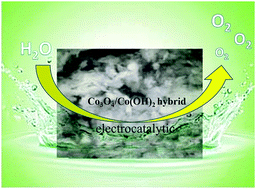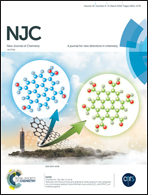In situ grown Co3O4/Co(OH)2 hybrids as efficient electrocatalysts for water oxidation†
Abstract
Transition-metal oxides have been considered as water oxidation catalyst (WOC) alternatives to precious metal-based catalysts, but they generally display inferior electrocatalytic efficiency. A novel heterogeneous Co3O4/Co(OH)2 hybrid is synthesized through a simple facile one-pot hydrothermal reaction. The as-obtained hierarchical Co3O4/Co(OH)2 hybrids can serve as highly efficient electrocatalytic water oxidation catalysts for alkaline electrolytes. The prepared hierarchical Co3O4/Co(OH)2 hybrids show strong interaction effects, facilitating the increase of the number of active sites and facile charge transfer ability. Remarkably, hierarchical Co3O4/Co(OH)2 hybrids afforded electrocatalytic water oxidation activity, it requires a low potential of 1.60 V to obtain a current density of 10 mA cm−2 and a small Tafel slope of approximately 103 mV dec−1. A preliminary electrocatalytic water oxidation reaction mechanism catalyzed by a cobalt-based catalyst is proposed according to the reported publications and experimental data. The final step for oxygen evolution is the rate-determining step, which is supported by electrochemical experiments. This study indicates that the hierarchical Co3O4/Co(OH)2 hybrids are promising as efficient electrocatalysts for water oxidation that can be used in water splitting for hydrogen production and generation of hydrocarbon fuels and fuel cells.



 Please wait while we load your content...
Please wait while we load your content...